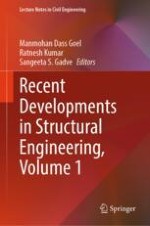2024 | OriginalPaper | Buchkapitel
Prediction of Stress Fields in Particulate Polymer Composites Using Micromechanics-Based Artificial Intelligence Model
verfasst von : Sristi Gupta, Tanmoy Mukhopadhyay, Divyesh Varade, Vinod Kushvaha
Erschienen in: Recent Developments in Structural Engineering, Volume 1
Verlag: Springer Nature Singapore
Aktivieren Sie unsere intelligente Suche, um passende Fachinhalte oder Patente zu finden.
Wählen Sie Textabschnitte aus um mit Künstlicher Intelligenz passenden Patente zu finden. powered by
Markieren Sie Textabschnitte, um KI-gestützt weitere passende Inhalte zu finden. powered by
